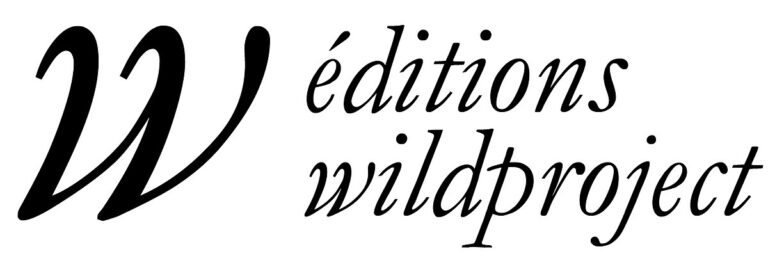Sylvia Amar
Curator, productor, researcher in architecture history
Spring 2025

- Architecture
- San Francisco
“Better inhabiting the Earth could start with Architecture’s promise to Nature to rethink itself as part of the living world.”
I was born in Marseille. I left it. Enough to come back. Outlying areas are lands of projects and alternatives; nothing is simple there, everything is possible. I have always believed that creation and contemporary society are deeply intertwined. I still do. Producing works and exhibitions is a way to demonstrate this daily.
While the nature of space carries the meaning of my actions, research illuminates many aspects of my journey and commitments. This field of perspectives has allowed me to understand that questioning the communal world and its architectural productions is a detour to explore a family history where migration rhymes with the quest for a better life.
Research is also a practice of creation. It allows dialogue with all fields of human thought. All knowledge and know-how are available to open spaces for reflection, continue, and nourish convictions. Research is a territory of discoveries, and it is on one such discovery, the work of American architect Sim van der Ryn, that my project for Villa Albertine is based.
To discovery, I add a willingness to share. In the face of the urgency for our societies to regain coherence between ways of living and ways of inhabiting, it seems necessary to highlight existing conceptual and technical resources. These resources are alternatives, and is it not this ecological healing that we profoundly need?
Sylvia Amar is a visual arts curator-producer and a researcher in architectural history. She founded and directed the Bureau des compétences et désirs (1994-2011) and later served as Head of the Production Department at MUCEM (2011-2022, www.mucem.org), where she co-curated the permanent exhibition Connectivités (2017-2023).
She is an associate member of the INAMA Laboratory (ENSA Marseille) and the Global Ecovillage Network Research Lab. Her doctoral thesis is titled “Ecotopic Architecture Laboratories: From Yesterday’s Communities to Today’s Ecovillages – United States-Europe, 1965-2015” (defended in 2020 under the supervision of J.L. Bonillo and A. Picon).
My project for Villa Albertine is to translate into French a selection of texts by the American architect Sim van der Ryn concerning his concept of Ecological Design.
Van der Ryn’s written and built work was a true discovery for me. The first encounter came through patience. While delving into the archives of a French architecture magazine, I stumbled upon his article “The Advent of Natural Design” (1975). Instantly, this text provided new insights into three years of research and offered a fresh perspective on my ongoing thesis conclusions. My curiosity was piqued. I expected to uncover a substantial amount of information, but the opposite happened. As I explored Van der Ryn’s written and built work, I found how little known it is. The idea of translation became imperative.
Several aspects of his work are particularly relevant, starting with his instinctive ability to restore continuities between thought and action, which undeniably places him within the American philosophy of demonstration through action. Thus, Van der Ryn is both a designer and a builder, as well as a self-builder. He is also a teacher and a writer.
Little known and underutilized in both the United States and Europe, Sim Van der Ryn’s work has, since the 1970s, demonstrated a pioneering commitment to architecture and, more broadly, to ecological thinking of great relevance to current challenges.
The conceptual clarity of his work motivates me to position my project for Villa Albertine as a first step towards understanding a key figure in the American alternative scene, and to present his entire body of work as a historical resource, particularly for young architects in training.
Translating is not merely facilitating the transfer from one language to another, but creating spaces of mutual understanding and transforming resources into shared wealth.
While the discovery of the American continent traces the first mappings of globalization, the history of the United States is a national story nourished by incessant cultural exchanges with Europe since the late 17th century.
Drawing a geography that connects global, regional, and local scales, Sim van der Ryn’s career perfectly illustrates these dynamics of emergence, exchange, and transformation. A native of the Netherlands, Van der Ryn arrives in New York with a family scarred by World War II. As a young architect, he leaves the prestigious firm that employs him for a small office in San Francisco. His migration westward allows him to reach the last frontier, a mythical place where the desire to move beyond the constraints of a profession centered on modern heritage can be expressed.
The countercultural dynamics of California will be the grounding and flourishing ground for his aspirations. Among the numerous socio-spatial experiments known in this territory, Sim van der Ryn quickly becomes one of the key figures embracing the bioregional movement, focusing more on the success of his actions than on their acclaim. Perhaps this is one reason for the limited dissemination of his work? Meeting Sim again, as well as some of his collaborators and students, and engaging with the few researchers who have written about his work, is an integral part of this residency project.
In partnership with

Sim van der Ryn’s Estate

Editions Wildproject
Wildproject is an independent publishing house dedicated to ecology—understood as a cultural and political revolution within modern societies. Since its founding in 2008, the house has championed a vision of ecology as a movement that is simultaneously scientific, social, political, and philosophical. Ecology is viewed as a movement approaching its centenary, with a scope comparable to that of the Renaissance.

